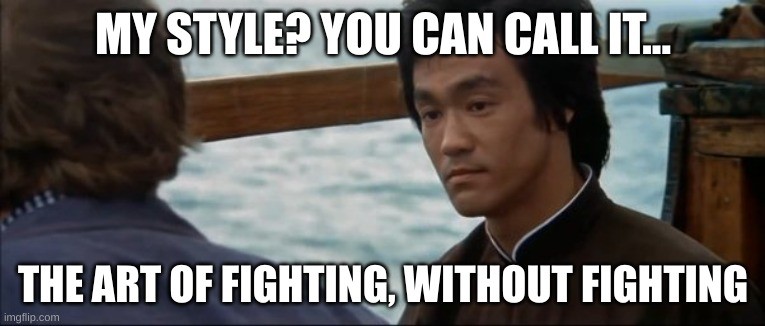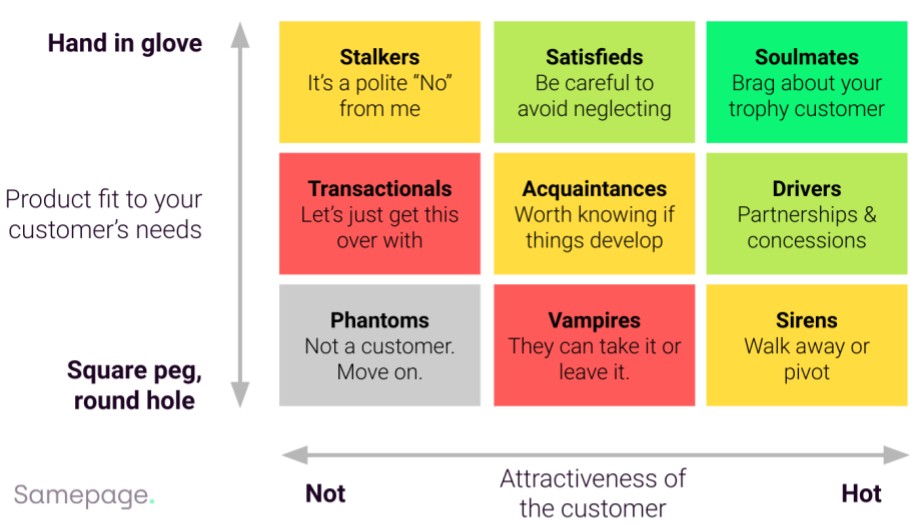Imagine: you’re hungry, so you find a nice-looking bistro. When the waiter arrives, you tell him that you’ve already decided what you want to eat and, helpfully, have written down a Schedule Of Work for the chef. You hand him a recipe specifying ingredients, method and timescales, and insist that the waiter agree to this before you’ll confirm your order. You’ve already calculated the cost of the meal based on the prices of ingredients in your local market, and added what you think is a fair labour rate for someone to perform the recipe instructions. You’ve done all the hard work, so expect to make a big saving compared to the prices on the restaurant’s menu.
I’d hope this isn’t how you order food, but all too often it’s how service-based companies are approached by prospective clients. This despite the fact that provider case studies always talk about positive business outcomes for their clients, and never say things like “We spent many months working very hard to write lots of lines of code”, or “We followed the client’s instructions to the letter.”
It’s especially a problem for technology-based propositions, because clients don’t usually have any clear understanding of what it takes to create and sustain them. Earlier in my career I was sitting in an office screen-gazing when a builder, who was working outside, knocked on the window and shouted “Hey, why don’t you get a proper job?” much to the amusement of his workmates. Most people’s concept of software work is informed by Hollywood movies in which ‘the geek’ character taps a few keys and magically solves whatever problem they’re given, in seconds. Oh and, of course, this character is irascible, arrogant and overweight because they don’t do any ‘real work’.
Knowledge and experience are difficult to price. A nice illustration of this is the story of when in 1923 engineering and mathematics genius Charles Proteus Steinmetz was engaged by Henry Ford at his Michigan plant to diagnose a problem with a huge generator that had stymied Ford’s own engineers. Steinmetz spent two days and nights listening to the generator and scribbling computations on his notepad. He then asked for a ladder, climbed up the generator and made a chalk mark on its side, telling Ford’s engineers to remove a plate at the mark and replace sixteen windings from the field coil. They did, and the generator performed to perfection. Ford was delighted until he received an invoice for $10,000, whereupon he asked for an itemised bill. When he received it, it read: “Making chalk mark on generator: $1. Knowing where to make mark: $9,999.”
In my last blog, I outlined how service providers can’t ever reach the margins attainable by successful product companies, which can re-sell the same value over and over again. The first of my ten steps to productisation is:
Redefine your proposition in terms of results, not activities.
"This sounds simple, but it requires you to say “no” to people offering you money to say “yes”. Product companies encounter this as prospects promising to buy the product “only if you add this feature” or to otherwise change the product in some way unlikely to generate future sales. It’s hard to walk away from a sale, even in the face of diversionary demands, but if you have an established product you can at least comfort yourself with the knowledge that others in the future will buy your product as-is.
When you’re a service provider, or a product company trying to hone its propositions, it’s more risky because you don’t yet have a proven model. In a sense you’re becoming a product startup, stubbornly holding to a product vision and strategy in the hope that it will prove to be attractive to your target markets and generate sustainable profits.

This requires nerve, but there is a way you can lower the risk. Inspired by my favourite business guru Bruce Lee in Enter The Dragon, I call it “The Art of Saying No Without Saying No”. This is how it works:
Prospect arrives with a preconceived solution which looks suboptimal for the prospect and unviable for your business.
Show admiration for their efforts to design a solution, and ask them to tell you about their journey designing it.
Hopefully the first thing they’ll explain is the problem they’re trying to solve. If they don’t do this, keep digging with more fascinated admiration.
If you think the problem is one that your company can probably solve (i.e. it’s a Sales Qualified Lead or SQL), engage a colleague who can validate this, and offer deeper insights into how it could be solved. This might be a product (delivery) manager, or whatever you call it - in my previous blog I used the term “Solution Manager”. If you don’t have anyone like this, then drop me a line to chat about why you should.
Your product colleague should continue showing fascinated admiration for the prospect’s endeavour, and at no point pour scorn on their ill-conceived attempt at designing a solution.
Direct the conversation towards how the solution could be validated, in measurable terms (i.e. KPIs) that don’t depend on that specific solution. This could be changes in customer behaviour, improved satisfaction or margins, reduction of waste etc. Position this as offering as your commitment to their success.
When you feel the relationship is strong enough (probably not in the first conversation), gently suggest that those KPIs can be met using a different solution (your solution), at less cost and more quickly, because you already know how to do it. The aim is to get the prospect to focus on getting the results rather than building a solution. If they point out something measurably critical to them that your solution doesn’t offer, and your product colleague thinks you shouldn’t build (because it’s not strategically aligned), then walk away.
If the prospect won’t entertain any discussion of using your solution instead of theirs, even though they can’t disprove that it will be quicker, cheaper and less risky, it’s because they have trust and/or ego issues. Walk away - people don’t change, and these issues will come back to bite you later, trust me.
If the prospect agrees with your solution but doesn’t see why they should pay given that you’ve already built it or know how to do it, walk away. They see you as a cost centre, not a value add.
I’ve designed the model below to help you decide, a sort of ready-reckoner:

More about this in the next instalment!
Share
